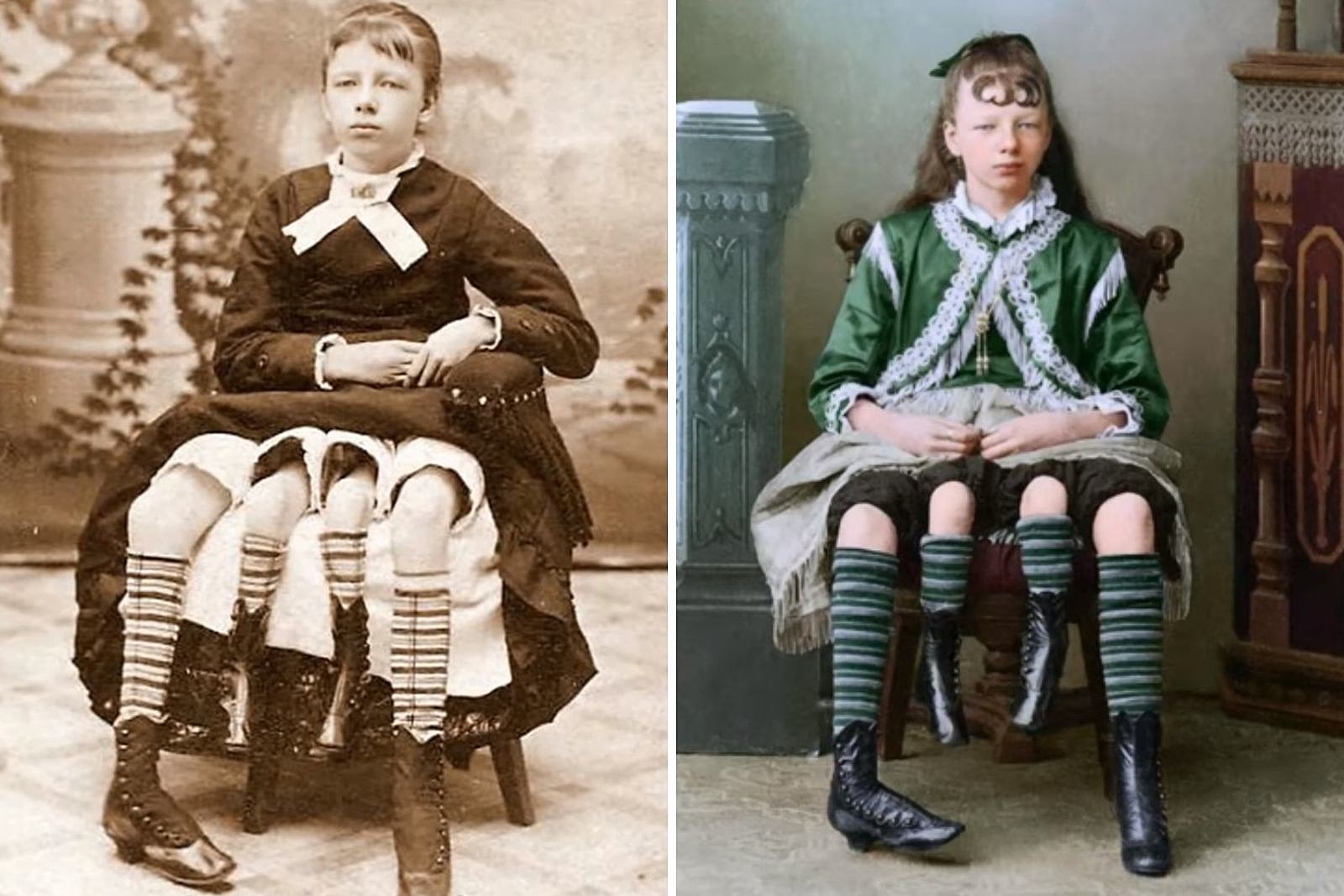
Myrtle Corbin was an extraordinary woman who captured the world's attention in the late 19th and early 20th centuries. Born with a rare condition called dipygus, she had two separate pelvises and four legs. Despite her unique physical appearance, Myrtle led a remarkable life, becoming a successful sideshow performer and a loving mother of five children. Her story is not just about her medical condition but also about her resilience, determination, and the way she navigated societal norms of her time. Myrtle Corbin's life offers a fascinating glimpse into the world of medical anomalies, human curiosity, and the spirit of overcoming challenges.
Key Takeaways:
- Myrtle Corbin, the "Four-Legged Girl," led a remarkable life, challenging societal perceptions and contributing to medical science. Her legacy continues to inspire and promote inclusivity in society.
- Despite her rare condition, Myrtle Corbin lived a fulfilling life, showcasing resilience, humor, and a love for music and gardening. Her story reminds us of the incredible diversity of human experiences.
Who Was Myrtle Corbin?
Myrtle Corbin, born in 1868, was a fascinating figure in medical history. Known as the "Four-Legged Girl," she lived a life that intrigued many. Let's dive into some intriguing facts about her.
-
Myrtle was born with a rare condition called dipygus, which caused her to have two separate pelvises and four legs.
-
Her parents noticed her unique condition immediately after birth, but she was otherwise healthy.
-
Despite her condition, Myrtle learned to walk on her two inner legs, which were smaller and weaker than her outer legs.
-
She became a sideshow performer at a young age, joining P.T. Barnum's circus when she was just 13 years old.
-
Myrtle's act was incredibly popular, and she earned a significant income, which helped support her family.
Medical Curiosities
Myrtle's condition fascinated doctors and the public alike. Here are some medical facts about her unique anatomy.
-
Each pair of legs had its own set of reproductive organs, though only one set was functional.
-
Doctors examined Myrtle extensively, and she was featured in several medical journals of the time.
-
Her condition was so rare that it is estimated to occur in only one in a million births.
-
Despite her unusual anatomy, Myrtle lived a relatively normal life and had five children.
-
She married James Clinton Bicknell at the age of 19, and they had a long and happy marriage.
Life in the Spotlight
Myrtle's life as a performer brought her fame and fortune, but it also came with challenges.
-
She was often the subject of public curiosity and sometimes faced invasive questions about her condition.
-
Myrtle handled her fame with grace and dignity, often educating people about her condition.
-
She retired from performing in her early 20s but remained a popular figure in medical and circus history.
-
Myrtle's story was featured in various newspapers and magazines, making her a well-known figure of her time.
-
Despite her fame, she remained humble and focused on her family.
Personal Life and Legacy
Myrtle's personal life was as remarkable as her public one. Here are some facts about her life outside the spotlight.
-
She was a devoted mother and wife, raising her children with love and care.
-
Myrtle's children were all born healthy, without any signs of her condition.
-
She lived in Texas for most of her life, where she was a respected member of her community.
-
Myrtle passed away in 1928 at the age of 60, leaving behind a legacy of resilience and strength.
-
Her story continues to inspire people today, reminding us of the incredible diversity of human experiences.
Impact on Medical Science
Myrtle's condition provided valuable insights for medical science. Here are some ways she contributed to the field.
-
Her case helped doctors understand more about congenital anomalies and their impact on the human body.
-
Myrtle's willingness to be studied allowed for advancements in medical knowledge and treatment of similar conditions.
-
She was one of the first people with dipygus to be extensively documented, providing a valuable case study for future research.
-
Her life demonstrated that people with rare conditions could lead fulfilling lives, challenging societal perceptions.
-
Myrtle's story continues to be studied in medical schools, highlighting the importance of compassion and understanding in healthcare.
Cultural Influence
Myrtle's life and story have left a lasting impact on culture and society. Here are some ways she has influenced the world.
-
She has been featured in various books, documentaries, and articles, keeping her story alive for new generations.
-
Myrtle's life has inspired characters in literature and film, showcasing the human spirit's resilience.
-
Her story has been used to promote awareness and acceptance of people with disabilities.
-
Myrtle's legacy continues to challenge stereotypes and encourage inclusivity in society.
-
She remains a symbol of strength and perseverance, inspiring people to overcome their own challenges.
Fun Facts
Here are some lighter, fun facts about Myrtle Corbin that you might not know.
-
Myrtle loved music and often played the piano for her family and friends.
-
She had a great sense of humor and enjoyed making people laugh.
-
Myrtle was an avid reader and had a large collection of books.
-
She enjoyed gardening and spent much of her free time tending to her plants.
-
Myrtle's favorite color was blue, and she often wore blue dresses when performing.
Myrtle Corbin's Legacy
Myrtle Corbin's life story is a testament to human resilience and the power of embracing one's uniqueness. Born with a rare condition, she didn't let it define her. Instead, she became a celebrated figure in the world of sideshows, captivating audiences with her strength and charm. Her journey wasn't just about overcoming physical challenges; it was about breaking societal norms and inspiring others to do the same.
Her legacy lives on, reminding us that our differences make us special. Myrtle's story encourages us to face our own challenges head-on, with courage and grace. She showed that no matter the obstacles, we can all find our place in the world and make a lasting impact. Myrtle Corbin remains an enduring symbol of perseverance, individuality, and the extraordinary potential within each of us.
Frequently Asked Questions
Was this page helpful?
Our commitment to delivering trustworthy and engaging content is at the heart of what we do. Each fact on our site is contributed by real users like you, bringing a wealth of diverse insights and information. To ensure the highest standards of accuracy and reliability, our dedicated editors meticulously review each submission. This process guarantees that the facts we share are not only fascinating but also credible. Trust in our commitment to quality and authenticity as you explore and learn with us.


